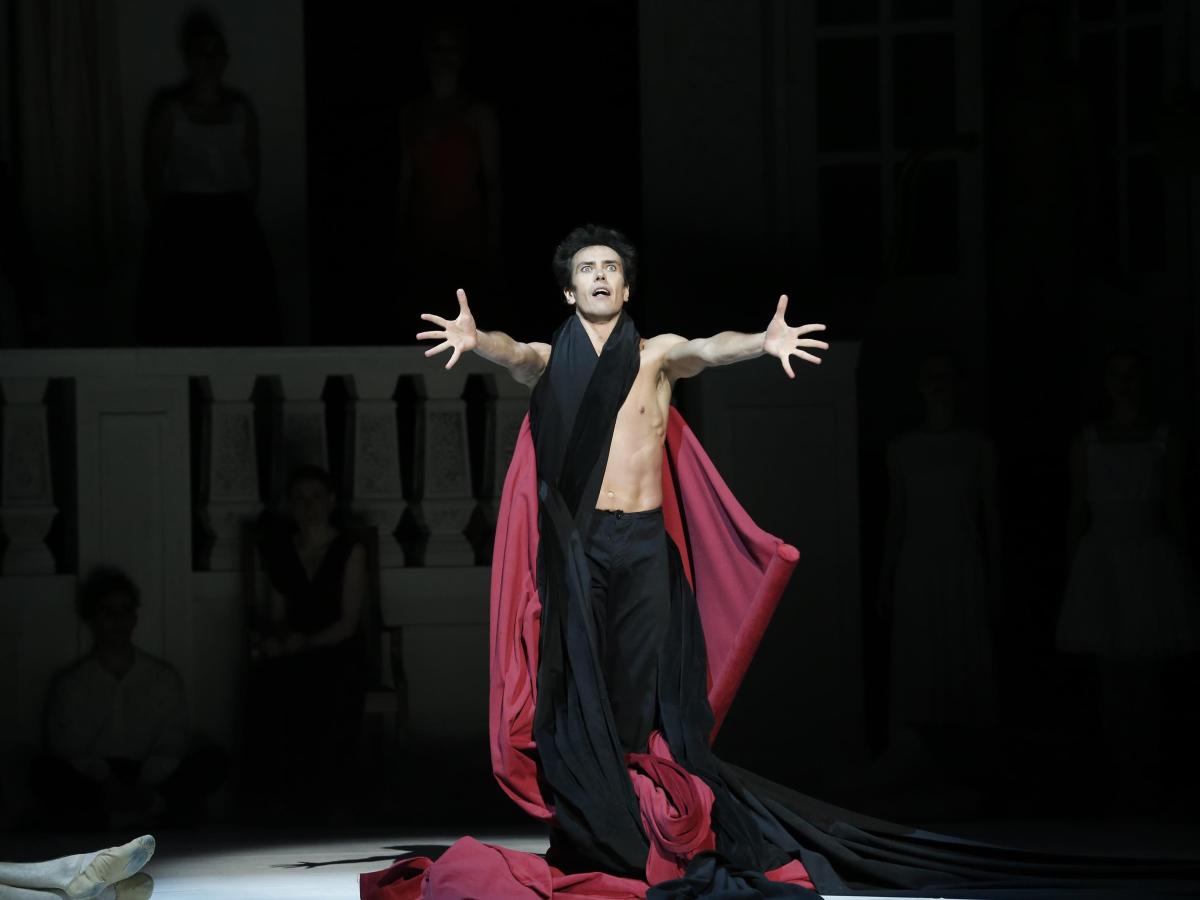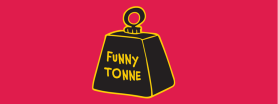Alexandre Riabko in The Australian Ballet’s Nijinsky. Photo: Jeff Busby.
John Neumeier’s celebration of Vaslav Nijinsky, the Russian ballet dancer and choreographer whose sensuous performances and startling innovations forever changed the art form, begins near the end, as Nijinsky (danced with admirable precision on opening night by guest artist Alexandre Riabko) gives his final public performance in 1919.
In a hotel ballroom, chattering socialites gather for a private performance by the ballet legend regularly described as le dieu de la danse (‘the god of the dance’). Accompanied by a solo pianist, the performance they witness is startling, even shocking – Nijinsky’s movements are abrupt, brutal, distressing, at one point biting down on his own fist as if trying to stifle a scream; an evocation, perhaps, of what he reputedly told the audience that day: ‘Now I will dance you the war … the war which you did not prevent.’
It was at this point in his life that Nijinsky’s schizophrenia became debilitating, and it is this mental fracturing that provides Neumeier with an opportunity to introduce a dizzying layering of references and imagery to his ballet.
Echoes of Nijinsky’s past life and previous performances swirl together as Neumeier’s ballet unfolds – including the Faun from L’après-midi d’un faune and the Golden Slave from Schéhérazade (danced powerfully and sensually by Christiano Martino) and the Spirit of the Rose from Spectre de la rose (Chengwu Guo). We also see members of his family, explore Nijinsky’s grief over the death of his brother Stanislav (François-Eloi Lavignac) and the lingering toxicity of the Great War, and witness Nijinsky’s romantic entanglements with his wife Romola de Pulszky (a skilled Amy Harris) and his lover, the ballet impresario and Ballets Russes founder Sergei Diaghilev (a suitably poised and powerful Adam Bull).
Unfortunately, the memories and hallucinations which haunt Nijinsky throughout this production don’t necessarily make for a cohesive or engaging night at the theatre. Just as Hollywood biopics often suffer by trying to condense a memorable life into an episodic series of vignettes, Nijinsky feels over-stuffed and convoluted, academic rather than passionate. Great art does not have to be easily digestible and accessible, but watching Neumeier’s ballet one has a sense that the choreographer – an expert on Nijinsky and the Ballets Russes – is too enamoured of his source material; more concerned with squeezing in the maximum number of references to his subject rather than building an emotional connection for the audience.
On opening night too there was a sense that the normally precise dancers of The Australian Ballet were struggling somewhat with a choreographic language radically different to their usual style, with two clumsy falls evident in the first half of the production – a flaw emphasised by the focus and precision which Riabko, a principal dancer of the Hamburg Ballet, invested in his own role.
Compelling moments certainly exist in Nijinsky, ranging from the intimate and erotic to the martial and dramatic, with some of the best moments danced with vigour and power by the men of the company. Visually the production is a rich affair, with vivid costumes referencing the works of the Ballets Russes and designed (like the sets) by Neumeier himself and loaned by The National Ballet of Canada.
Under the baton of Nicolette Fraillon, Orchestra Victoria played passionately and proficiently, although the extended sequences of music were sometimes relentless, as though an over-respectful Neumeier was loathe to chop or condense certain significant compositions adding to the sensation of the production as a whole being over-extended and ever so slightly tedious. Shorter samples of music may have conveyed the focus of some scenes more precisely.
Rating: 3 stars out of 5
The Australian Ballet’s Nijinsky
A ballet by John Neumeier
Costume, set and lighting design by John Neumeier, based partly on original sketches by Leon Bakst and Alexandre Benois
Arts Centre Melbourne, State Theatre
7 – 17 September 2016
Additional performances:
Adelaide Festival Centre – 14-18 October 2016
Sydney Opera House – 11-28 November 2016





